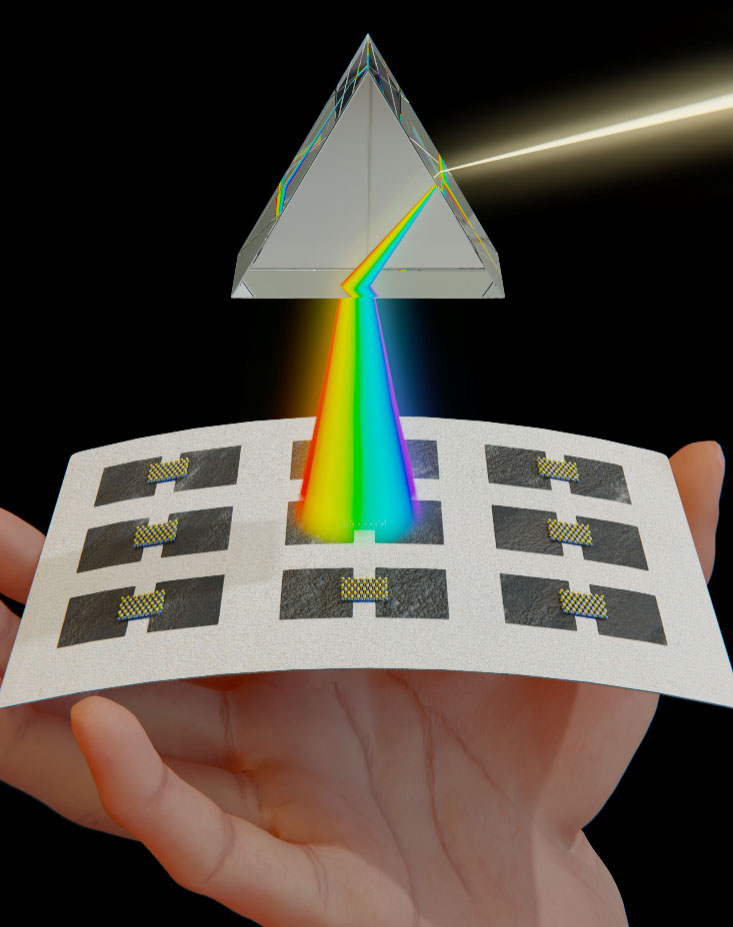| Feb 20, 2023 | |
WS2 photodetectors on paper substrates show promising results for disposable electronics |
|
| (Nanowerk Spotlight) Scientists at the Instituto de Ciencia de Materiales de Madrid (part of the Spanish National Research Council), in collaboration with partners from King Saud University (Saudi Arabia) and Xidian University (China), have made significant strides in developing photodetectors made with tungsten disulfide (WS2) on paper substrates for disposable electronics. | |
| Their research, which addresses the growing issue of electronic waste, has yielded promising results with WS2 photodetectors on paper substrates reaching photo responses comparable to commercially available silicon photodetectors. The findings have significant implications for ubiquitous electronics and low-performance sensing applications. | |
| The Spanish, Saudi, Chinese research team, has made significant strides in developing photodetectors made with tungsten disulfide (WS2) on paper substrates for disposable electronics. | |
 |
|
| Artistic impression of the tungsten disulfide based photodetectors fabricated on paper. (Image: Enrique Sahagún, SCIXEL) | |
| The research, published in Opto-Electronic Advances ("Solvent-free fabrication of broadband WS2 photodetectors on paper") and led by Andres Castellanos-Gomez, integrated WS2 on standard office paper through abrasion and contacts the semiconducting WS2 films with graphite electrodes to measure the response to light. | |
| The results were promising, with Castellanos-Gomez stating, "We found a remarkable good photo response, reaching very close to commercially available silicon photodetectors. We reach Responsivity in the 100s mA/W which is only one order of magnitude lower than the fully optimized silicon photodiodes." | |
| The use of paper substrate addresses the growing issue of electronic waste, as Castellanos-Gomez explains, "The use of paper substrate is motivated by the problem of electronic waste. Only a small fraction (15% approx.) of electronic waste can be recycled, this motivated us to explore electronics with low e-waste footprint. In our work, we explore the integration of different van der Waals materials on paper and we found that WS2 can be integrated easily and yields excellent performance." | |
| These disposable photodetectors have potential applications in ubiquitous electronics, such as internet of things and smart packaging, for low-performance sensing applications, such as monitoring exposure to light. Castellanos-Gomez explains, "We believe that these kind of disposable photodetectors can have an important role in ubiquitous electronics (internet of things, smart packaging, etc) for low performance sending applications (e.g. applications requiring to monitor if a good/package has been exposed to light and for how long)." | |
| The researchers are now working to further improve the technology, with Castellanos-Gomez stating, "We are working now to scale up the fabrication process and to make more complex device architectures (e.g. integrating a gate electrode to the devices, making arrays of sensors, etc)." | |
| This research highlights the potential of WS2 on paper substrates as a promising alternative for disposable electronics. The results will inspire further innovation in sustainable electronics for a greener future. | |
| Provided by Instituto de Ciencia de Materiales de Madrid | |
|
Become a Spotlight guest author! Join our large and growing group of guest contributors. Have you just published a scientific paper or have other exciting developments to share with the nanotechnology community? Here is how to publish on nanowerk.com. |
|
